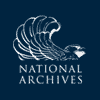Colonel Elias Dayton to George Washington, 18 March 1781
From Colonel Elias Dayton
Chatham [N.J.] March 18th 1781
Sir,
I enclose for your Excellency’s perusal a New York paper of the 16th which was handed to me last evening. As I conceived, the undoubted proofs it contains of a rupture between England and the states of Holland might be of essential importance to us, I have thought proper to forward it to your Excellency by the most expeditious mode of conveyance.1
A vessel just arrived in New York brings an account that one ev’ning last week she had fallen in with the French fleet which continued a direct course, not thinking proper to pursue her & that the next morning she met with the English & was along side of the Admiral for some time. She is fully of opinion from the courses which each steered, that the English will first make the Cheseapeak.2 I have the honor to be Yr Excellencys most obedient Hbl. servt
Elias Dayton
LS, DLC:GW. The closing is in Dayton’s writing. GW replied to Dayton on 27 March.
1. The enclosed newspaper has not been identified (see also General Orders, 19 March, source note). The Royal Gazette (New York City) for 17 March printed items on the rupture of relations between the United Provinces and Great Britain: a “MANIFESTO” issued by King George III against the conduct of the States General of the United Provinces and a report of the actions of the king’s council, both dated 20 Dec. 1780. Both were precipitated by the Dutch joining the League of Armed Neutrality on 10 December. For the league, see GW to Samuel Huntington, 6 July 1780, n.6. The manifesto of the king set out past grievances of Great Britain against the United Provinces, principally the support given by the Dutch to France and the United States and the recent discovery of a draft secret treaty of alliance drawn up by American agent William Lee and an Amsterdam merchant in September 1778. The king announced the withdrawal of his ambassador from The Hague and declared that he intended to “immediately pursue such vigorous measures” against the Dutch “as the occasion fully justifies … and the essential interests of our people require.” The report of the proceedings of the king’s council set out those measures: “general reprisals … against the ships, goods, and subjects of the States General,” including the seizure of Dutch ships and trade goods by the Royal Navy and British privateers. In effect, the council’s actions declared a naval war against the United Provinces. For more on the declaration of war and its causes, see , 65, 144–57.
2. British major Frederick Mackenzie, stationed in New York City, wrote in his diary entry for Wednesday, 14 March 1781: “Came in a ship from London in 9 weeks. This ship fell in with The French fleet consisting of 11 Sail, on Sunday Morning, S.E. from the Chesapeak. On Monday he fell in with the British fleet, in Latitude 39° 40’, nearer in shore, and standing for the Capes of the Chesapeak, and then computed to be about 22 leagues from The French fleet” (, 2:484). For the French and British fleets, the latter under Vice Adm. Marriot Arbuthnot, see Destouches to GW, 8 and 19 March, and the source notes to both documents.

![University of Virginia Press [link will open in a new window] University of Virginia Press](/lib/media/rotunda-white-on-blue.png)
